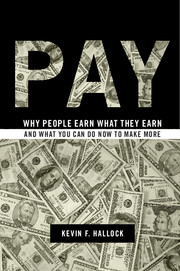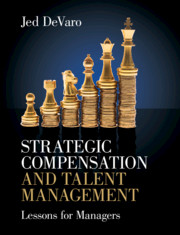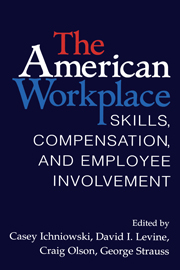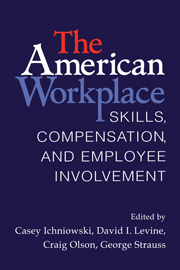Pay
Billions of people throughout the world are paid for their work. This book was written to explain why they earn what they earn and, in doing so, to help readers understand how they can earn more in both the short and long run. It describes wages, wage differences across groups, wage inequality, how organizations set pay and why, executive and “superstar” pay, the difference between pay and “total rewards” (including benefits, opportunities for growth, colleagues, and working conditions), compensation in nonprofits, and the differences between the cost of compensation to organizations and the value employees place on that compensation. It also offers tips on what an individual can do to do to earn more.
- The only accessible book for the general audience, discussing modern compensation as viewed by employees and their employers
- Author is a nationally-known specialist on U.S. and global compensation
- Will appeal to broad readerships in human resources, management, business, compensation studies, organizational psychology, sociology, governance and public policy, as well as labor economics
Reviews & endorsements
“Few topics are more fascinating to us and yet more difficult to discuss in polite company than what other people are paid. Kevin Hallock's Pay tells us what different jobs pay, why they are paid that way, and why figuring out the best way to pay different jobs is so challenging. An amusing and insightful read.” – Peter Cappelli, University of Pennsylvania
this enjoyable and informative book. We learn how pay is really set, how to find and use information about pay, and even how to earn a little more ourselves. Pay is a great new resource for everyone who sets pay, thinks about pay, or gets paid.” – David Card, University of California, Berkeley
“Kevin Hallock’s Pay couldn’t come at a better time. We all – executives, HR professionals, employees, policy officials, academics, and citizens – need a primer on how and what people get paid so we can start a long overdue national debate over how and what people should get paid. Professor Hallock lays a broad, balanced, and expert foundation for just such a debate. So let the debate begin, with this book as its key reference point!” – Thomas A. Kochan, Massachusetts Institute of Technology
“At a time of unprecedented wage inequality this book goes a long way toward demystifying the world of compensation. Written in clear prose with a good balance of facts, theories, and practice, it helps explain how people are paid; why the mix of compensation between cash, benefits, and equity can vary so much; and why employers even in the same industry structure their compensation packages so differently. This book is a useful guide for anyone challenged with the task of designing a compensation structure, regulating compensation, or negotiating compensation.” – Lisa M. Lynch, Dean, The Heller School for Social Policy and Management, Brandeis University
“A truly refreshing read on the complicated and highly emotional world of pay. Dr. Hallock helps make sense of the purpose and approach behind the many components of our pay: what and why we make what we do.” – Anne Ruddy, President and CEO of WorldatWork
Product details
September 2012Adobe eBook Reader
9781139558211
0 pages
0kg
26 b/w illus. 21 tables
This ISBN is for an eBook version which is distributed on our behalf by a third party.
Table of Contents
- Part I. How Hard Can This Be?:
- 1. Common sense, economics, and 'HR'?: how to pay
- 2. Wages, the wage distribution, and wage inequality
- 3. The facts: who makes what and what are their characteristics?
- 4. The difference between wages and total compensation: is there a difference between employee value of compensation and the cost to companies?
- Part II. How Organizations Set Pay Structure and Why:
- 5. Business strategy and compensation strategy: where you work matters
- 6. What's in a job?: Job analysis, job evaluation, and internal comparisons
- 7. Matching the internal organizational structure to the right market data: how and how much to pay
- 8. Paying executives, athletes, entertainers and other 'superstars'
- Part III. How People Are Paid Can Mean As Much As How Much They Are Paid:
- 9. Evaluating performance, incentives, and incentive pay
- 10. Stock and stock options
- 11. Pay mix: why offer benefits? Would employees prefer cash?
- 12. International compensation
- 13. Compensation in nonprofit organizations
- Part IV. What You Can Do To Make More and Conclusions:
- 14. What you can do now to make more now and later
- 15. Concluding thoughts.






